Low-Cost, Compact, and Rapid Bio-Impedance Spectrometer with Real-Time Bode and Nyquist Plots
Abstract
1. Introduction
- The system contains three main modules in an integrated (compact) ones, so synchronization among modules can be maintained/controlled by PC, and it can work automatically.
- The system uses programmable AC current source, so that the value of the current to be injected into biological samples can be selected/regulated through software via PC.
- The data acquisition system is built based on gain phase detector (GPD-AD8302), so that the value of V, I, and phase difference can be identified rapidly.
- We developed computational software (in Delphi) to calculate the complex impedance values of the samples, and also software to draw Bode and Nyquist plots. We do not need another application program (e.g., MS-Excel) to do the calculations separately. Therefore, the time needed for computation and data analysis to be reduced very significantly.
2. Materials and Methods
2.1. Unit of AC Current Source
2.1.1. Voltage Generator
2.1.2. Voltage to Current (V/I) Converter
2.2. Unit of Data Acquisition System
2.3. Software
- Determine the value of the current used (1 μA, 10 μA, 100 μA, or 1 mA). This is related to the selection of the RS value that stated in Equation (7).
- Determine low frequency and high frequency limits, and the number of data samples. This is related to the DDS-AD9850 voltage generator programming.
- Determine the voltage gain value of the reference signal and sample signal. This is related to the selection of the RG value to produce G1 and G2 that stated in Equation (10).
- Calculation of values of the current, voltage, phase angle, and impedance (using Equations (15) and (16))
- Calculation of real and imaginary parts of impedance (using Equation (17))
- Plot the impedance value in the Bode (magnitude and phase as a function of frequency)
- Plot the impedance value in Nyquist (real part vs. imaginary parts)
3. Results and Discussion
3.1. Prototype of the BIS Instrumentation System
- (a)
- The first step is preparing for pre-acquisition; such as determining the current value, the frequency limit, number of sampling frequencies, and voltage gain.
- (b)
- Initialization and generation of sine-voltage at one frequency by the AD9850. The time required, including providing a delay time so that the signal is stable is around 200 ms.
- (c)
- The microcontroller takes 50 pieces of VMAG and VPHS from AD8302 for single-frequency operation and directly sent to the PC. On the PC the data is averaged to get the best data. The time required is around 600 ms.
- (d)
- Calculation the value of ‘mag (dB)’ using Equation (15) and the value of ‘θ (degree)’ using Equation (16). Calculation the value of complex impedance magnitude, real part and imaginary part of complex impedance using Equation (17). Next, plotting the results on the Bode and Nyquist graphs provided. The time required is around 200 ms.
- (e)
- Return (looping) to point (b), until all frequencies stated in point (a) have been completed.
3.2. Application Examples
3.2.1. Parallel RC Circuit
3.2.2. Mixed Water and “Yakult” with Different Concentration
4. Conclusions
Author Contributions
Funding
Acknowledgments
Conflicts of Interest
References
- Pérez, P.; Maldonado, A.; Yúfera, A.; Huertas, G.; Rueda, A.; Huertas, J.L. Towards Bio-impedance Based Labs: A Review. J. Electr. Eng. 2016, 4, 116–127. [Google Scholar] [CrossRef]
- Bera, T.K. Bioelectrical impedance methods for noninvasive health monitoring: A review. J. Med. Eng. 2014, 2014. [Google Scholar] [CrossRef] [PubMed]
- Naranjo-Hernández, D.; Reina-Tosina, J.; Min, M. Fundamentals, recent advances, and future challenges in bioimpedance devices for healthcare applications. J. Sens. 2019, 2019. [Google Scholar] [CrossRef]
- Ho, J.S.; Low, J.H.; Sim, L.N.; Webster, R.D.; Rice, S.A.; Fane, A.G.; Coster, H.G.L. In-situ monitoring of biofouling on reverse osmosis membranes: Detection and mechanistic study using electrical impedance spectroscopy. J. Membr. Sci. 2016, 518, 229–242. [Google Scholar] [CrossRef]
- Sarró, E.; Lecina, M.; Fontova, A.; Solà, C.; Gòdia, F.; Cairó, J.J.; Bragós, R. Electrical impedance spectroscopy measurements using a four-electrode configuration improve on-line monitoring of cell concentration in adherent animal cell cultures. Biosens. Bioelectron. 2012, 31, 257–263. [Google Scholar] [CrossRef] [PubMed]
- Xu, Y.; Xie, X.; Duan, Y.; Wang, L.; Cheng, Z.; Cheng, J. A review of impedance measurements of whole cells. Biosens. Bioelectron. 2016, 77, 824–836. [Google Scholar] [CrossRef] [PubMed]
- Mansor, M.A.; Takeuchi, M.; Nakajima, M.; Hasegawa, Y.; Ahmad, M.R. Electrical impedance spectroscopy for detection of cells in suspensions using microfluidic device with integrated microneedles. Appl. Sci. 2017, 7, 170. [Google Scholar] [CrossRef]
- Zhang, F.; Jin, T.; Hu, Q.; He, P. Distinguishing skin cancer cells and normal cells using electrical impedance spectroscopy. J. Electroanal. Chem. 2018, 823, 531–536. [Google Scholar] [CrossRef]
- Asami, K. Low-frequency dielectric dispersion of bacterial cell suspensions. Colloids Surf. B Biointerfaces 2014, 119, 1–5. [Google Scholar] [CrossRef]
- Pal, N.; Sharma, S.; Gupta, S. Sensitive and rapid detection of pathogenic bacteria in small volumes using impedance spectroscopy technique. Biosens. Bioelectron. 2016, 77, 270–276. [Google Scholar] [CrossRef]
- Jinyang, L.; Meiqing, L.; Hanping, M.; Wenjing, Z. Diagnosis of potassium nutrition level in Solanum lycopersicum based on electrical impedance. Biosyst. Eng. 2016, 147, 130–138. [Google Scholar] [CrossRef]
- El Khaled, D.; Castellano, N.N.; Gazquez, J.A.; García Salvador, R.M.; Manzano-Agugliaro, F. Cleaner quality control system using bioimpedance methods: A review for fruits and vegetables. J. Clean. Prod. 2017, 140, 1749–1762. [Google Scholar] [CrossRef]
- Soares, C.; Tenreiro Machado, J.A.; Lopes, A.M.; Vieira, E.; Delerue-Matos, C. Electrochemical impedance spectroscopy characterization of beverages. Food Chem. 2020, 302, 125345. [Google Scholar] [CrossRef] [PubMed]
- Chowdhury, A.; Singh, P.; Bera, T.K.; Ghoshal, D.; Chakraborty, B. Electrical impedance spectroscopic study of mandarin orange during ripening. J. Food Meas. Charact. 2017, 11, 1654–1664. [Google Scholar] [CrossRef]
- Grossi, M.; Lecce, G.D.; Toschi, T.G.; Riccò, B. Fast and accurate determination of olive oil acidity by electrochemical impedance spectroscopy. IEEE Sens. J. 2014, 14, 2947–2954. [Google Scholar] [CrossRef]
- Aitzaz, A.M.; Kim, J.; Kim, T.; Park, K.D.; Cho, S. Electrical characterization of pork tissue measured by a monopolar injection needle and discrete fourier transform based impedance measurement. Appl. Sci. 2019, 9, 4049. [Google Scholar] [CrossRef]
- Pradhan, R.; Mitra, A.; Das, S. Impedimetric characterization of human blood using three-electrode based ECIS devices. J. Electr. Bioimpedance 2012, 3, 12–19. [Google Scholar] [CrossRef]
- Addabbo, T.; Fort, A.; Mugnaini, M.; Parri, L.; Pinzi, M.; Vignoli, V.; Mvemba, P.K.; Becatti, M.; Barygina, V.; Taddei, N.; et al. On the Suitability of Low-Cost Compact Instrumentation for Blood Impedance Measurements. IEEE Trans. Instrum. Meas. 2019, 68, 2412–2424. [Google Scholar] [CrossRef]
- Bohli, N.; Chammem, H.; Meilhac, O.; Mora, L.; Abdelghani, A. Electrochemical Impedance Spectroscopy on Interdigitated Gold Microelectrodes for Glycosylated Human Serum Albumin Characterization. IEEE Trans. Nanobiosci. 2017, 16, 676–681. [Google Scholar] [CrossRef]
- Sanchez, B.; Vandersteen, G.; Martin, I.; Castillo, D.; Torrego, A.; Riu, P.J.; Schoukens, J.; Bragos, R. In vivo electrical bioimpedance characterization of human lung tissue during the bronchoscopy procedure. A feasibility study. Med. Eng. Phys. 2013, 35, 949–957. [Google Scholar] [CrossRef]
- Zarafshani, A.; Bach, T.; Chatwin, C.R.; Tang, S.; Xiang, L.; Zheng, B. Conditioning Electrical Impedance Mammography System. Meas. J. Int. Meas. Confed. 2018, 116, 38–48. [Google Scholar] [CrossRef]
- Salazar-Anguiano, J.; Chávez-López, M.G.; Zúñiga-García, V.; Camacho, J.; Elías-Viñas, D. Resistive Part of Impedance as a Possible Indicator of Hepatocellular Carcinoma. Arch. Med. Res. 2018, 49, 89–93. [Google Scholar] [CrossRef] [PubMed]
- Zink, M.D.; Weyer, S.; Pauly, K.; Napp, A.; Dreher, M.; Leonhardt, S.; Marx, N.; Schauerte, P.; Mischke, K. Feasibility of bioelectrical impedance spectroscopy measurement before and after thoracentesis. BioMed Res. Int. 2015, 2015. [Google Scholar] [CrossRef] [PubMed]
- Freeborn, T.; Fu, B. Fatigue-Induced Cole Electrical Impedance Model Changes of Biceps Tissue Bioimpedance. Fractal Fract. 2018, 2, 27. [Google Scholar] [CrossRef]
- Ben Hamed, K.; Zorrig, W.; Hamzaoui, A.H. Electrical impedance spectroscopy: A tool to investigate the responses of one halophyte to different growth and stress conditions. Comput. Electron. Agric. 2016, 123, 376–383. [Google Scholar] [CrossRef]
- Bertemes-Filho, P.; Felipe, A.; Vincence, V.C. High Accurate Howland Current Source: Output Constraints Analysis. Circuits Syst. 2013, 04, 451–458. [Google Scholar] [CrossRef]
- Chen, T.A.; Wu, W.J.; Wei, C.L.; Darling, R.B.; Liu, B. Da Novel 10-Bit Impedance-To-Digital Converter for Electrochemical Impedance Spectroscopy Measurements. IEEE Trans. Biomed. Circuits Syst. 2017, 11, 370–379. [Google Scholar] [CrossRef]
- Mohamadou, Y.; Momo, F.; Theophile, L.; Njike Kouekeu Landry, C.; Fabrice, T.; Emmanuel, S. Accuracy enhancement in low frequency gain and phase detector (AD8302) based bioimpedance spectroscopy system. Meas. J. Int. Meas. Confed. 2018, 123, 304–308. [Google Scholar] [CrossRef]
- Jiang, Z.; Yao, J.; Wang, L.; Wu, H.; Huang, J.; Zhao, T.; Takei, M. Development of a Portable Electrochemical Impedance Spectroscopy System for Bio-Detection. IEEE Sens. J. 2019, 19, 5979–5987. [Google Scholar] [CrossRef]
- Bouchaala, D.; Fendri, A. Handheld Bioimpedance Spectrometer for the Total Frequency Range of the E -Dispersion. Proc. Sens. 2013, 2013, 175–180. [Google Scholar] [CrossRef]
- Mylott, E.; Kutschera, E.; Widenhorn, R. Bioelectrical impedance analysis as a laboratory activity: At the interface of physics and the body. Am. J. Phys. 2014, 82, 521–528. [Google Scholar] [CrossRef]
- Grassini, S.; Corbellini, S.; Angelini, E.; Ferraris, F.; Parvis, M. Low-cost impedance spectroscopy system based on a logarithmic amplifier. IEEE Trans. Instrum. Meas. 2015, 64, 1110–1117. [Google Scholar] [CrossRef]
- Jiang, H.; Sun, A.; Venkatesh, A.G.; Hall, D.A. An audio jack-based electrochemical impedance spectroscopy sensor for point-of-care diagnostics. IEEE Sens. J. 2017, 17, 589–597. [Google Scholar] [CrossRef] [PubMed]
- Analog Devices. CMOS 125 MHz Complete DDS Synthesizer; AD9850 Datasheet. 2004. Available online: https://www.analog.com/media/en/technical-documentation/data-sheets/AD9850.pdf (accessed on 22 January 2020).
- Analog Devices. LF-2.7 GHz RF/IF Gain and Phase Detector; AD8302 Datasheet. 2018. Available online: https://www.analog.com/media/en/technical-documentation/data-sheets/ad8302.pdf (accessed on 22 January 2020).
- Pilotte, M. Operation of RF Detector Products at Low Frequency; AN-691 Application Note; Analog Devices: Norwood, MA, USA, 2005; Available online: https://www.analog.com/media/en/technical-documentation/application-notes/AN-691.pdf (accessed on 22 January 2020).

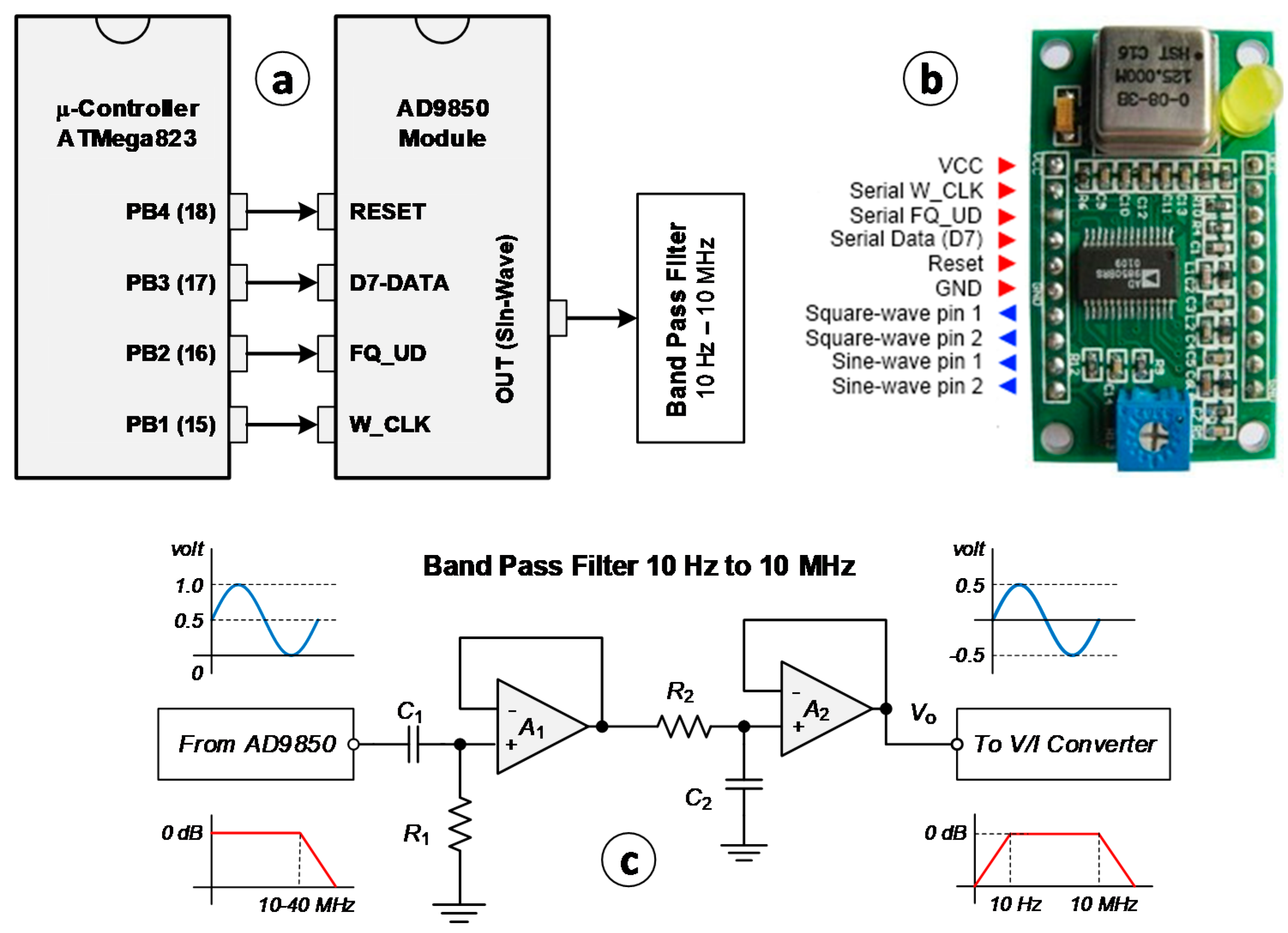
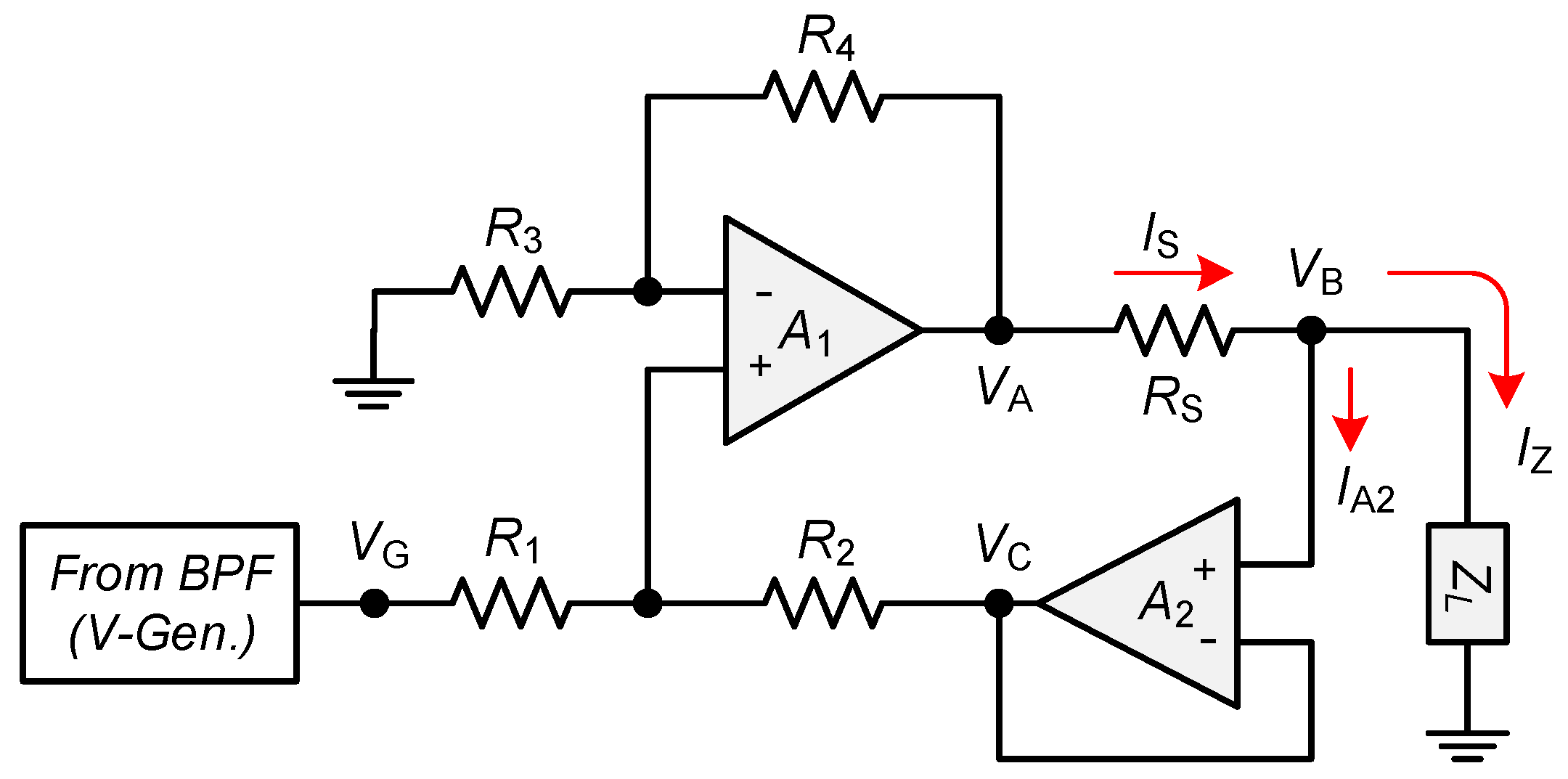
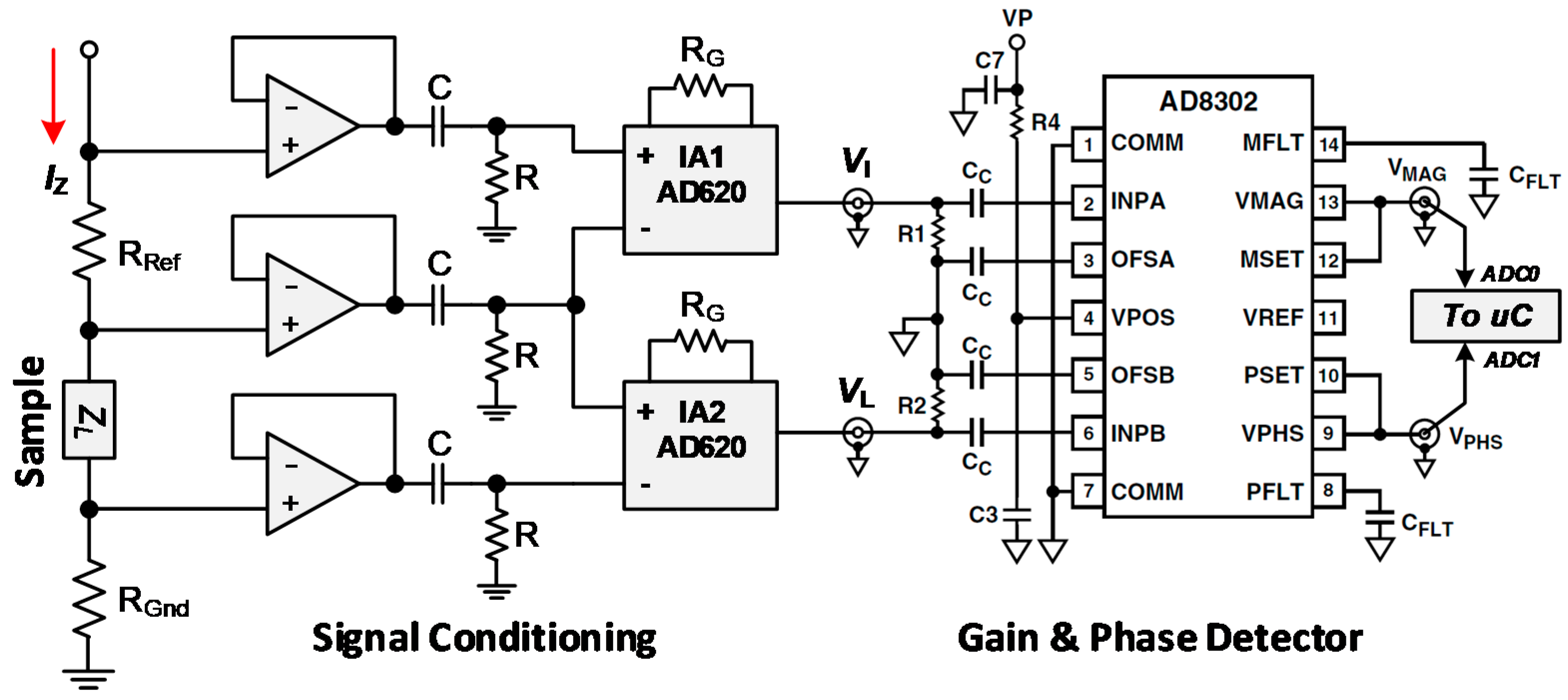
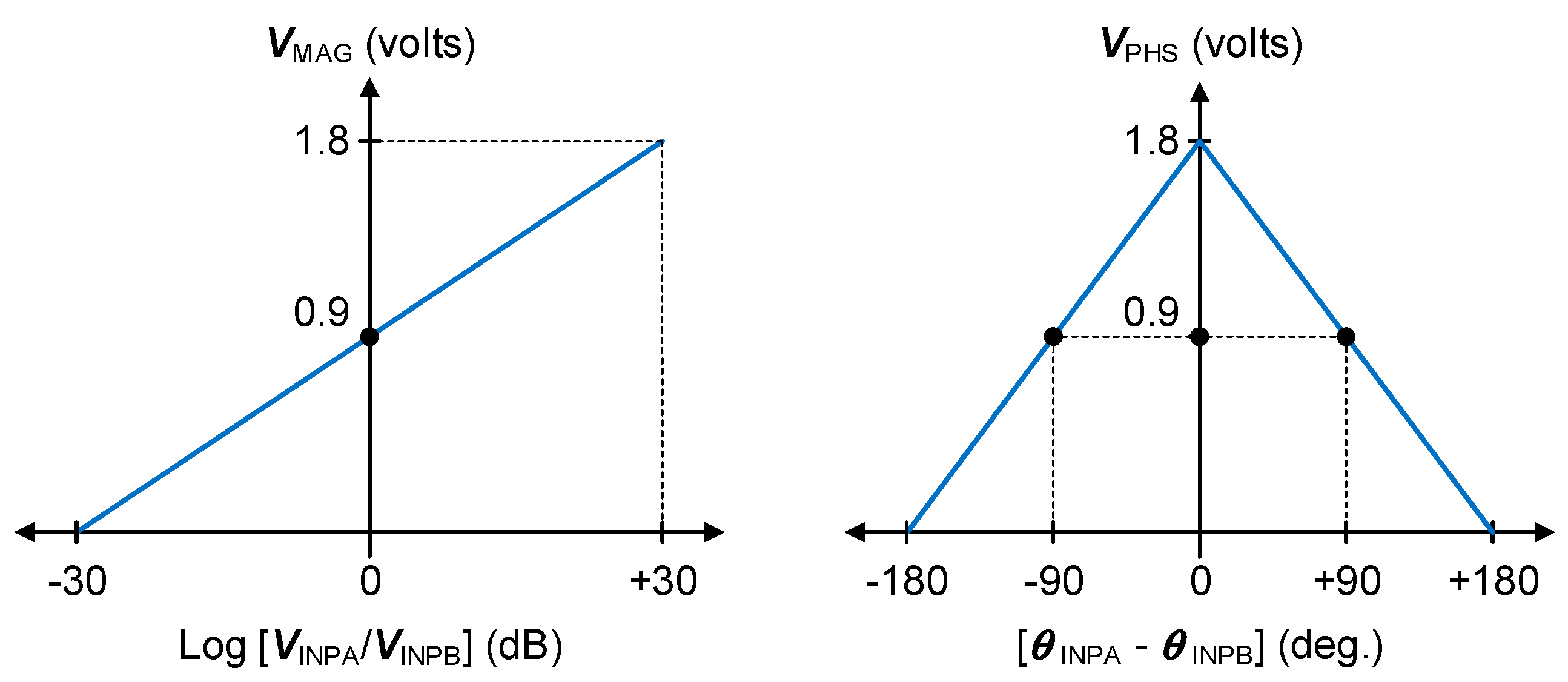
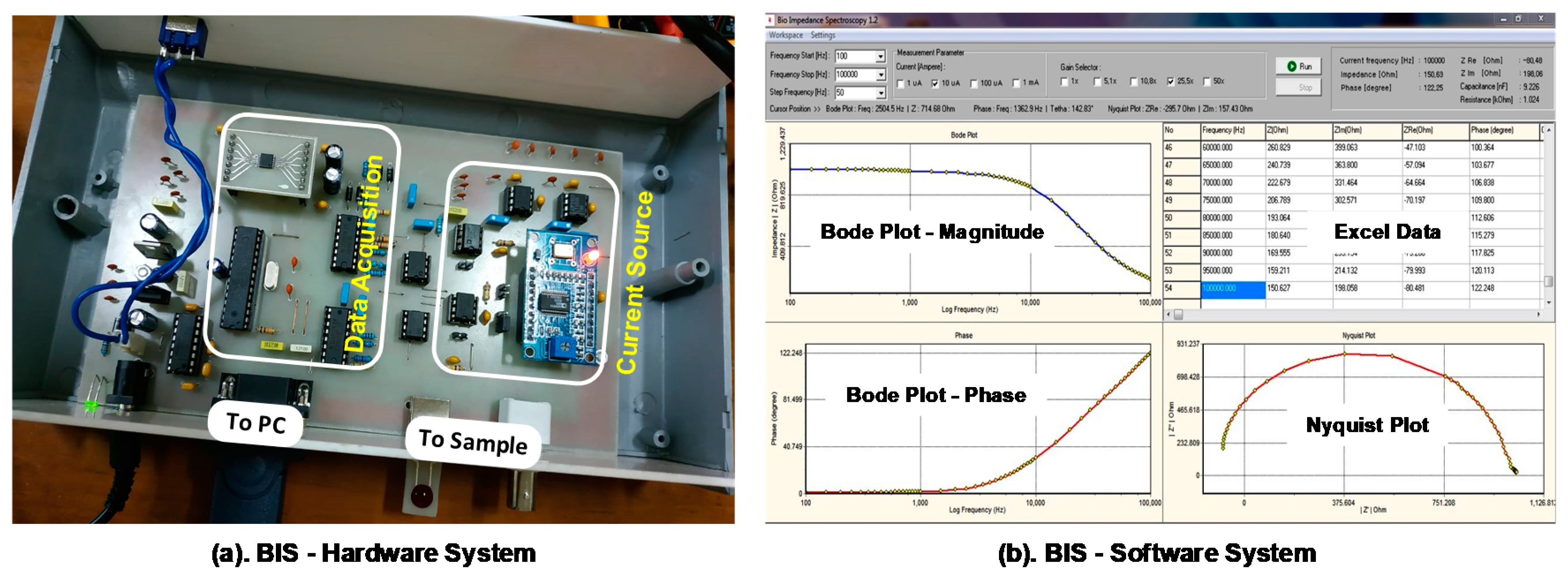
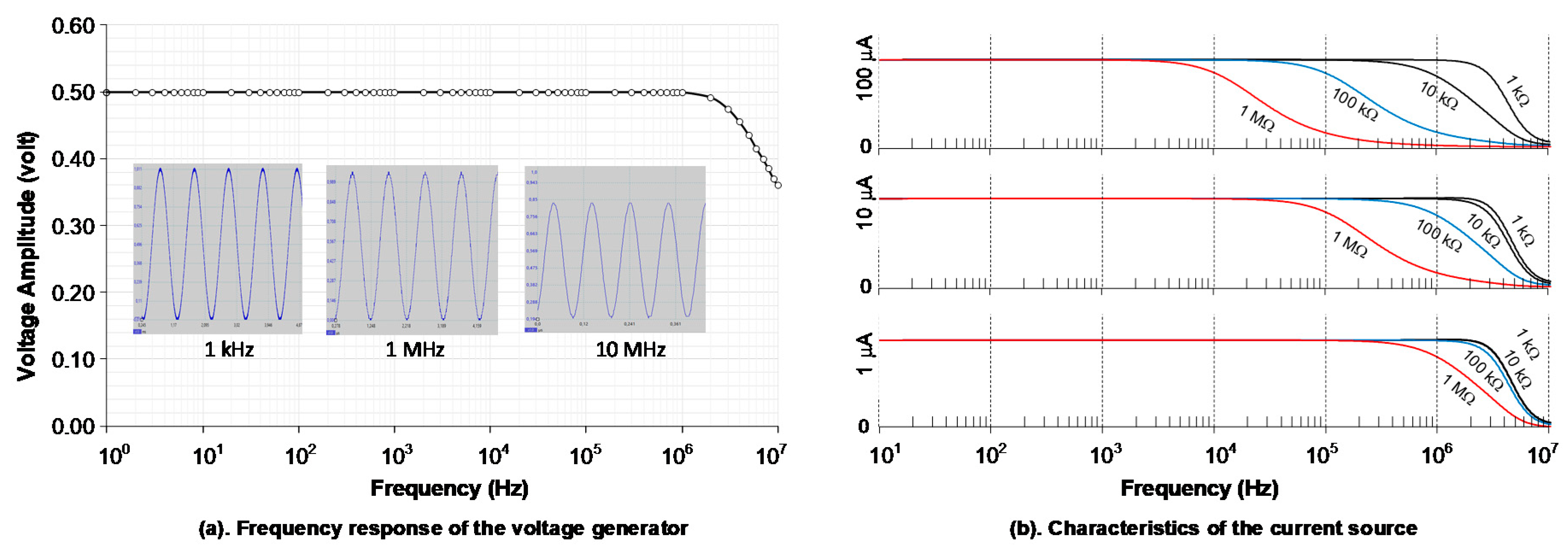

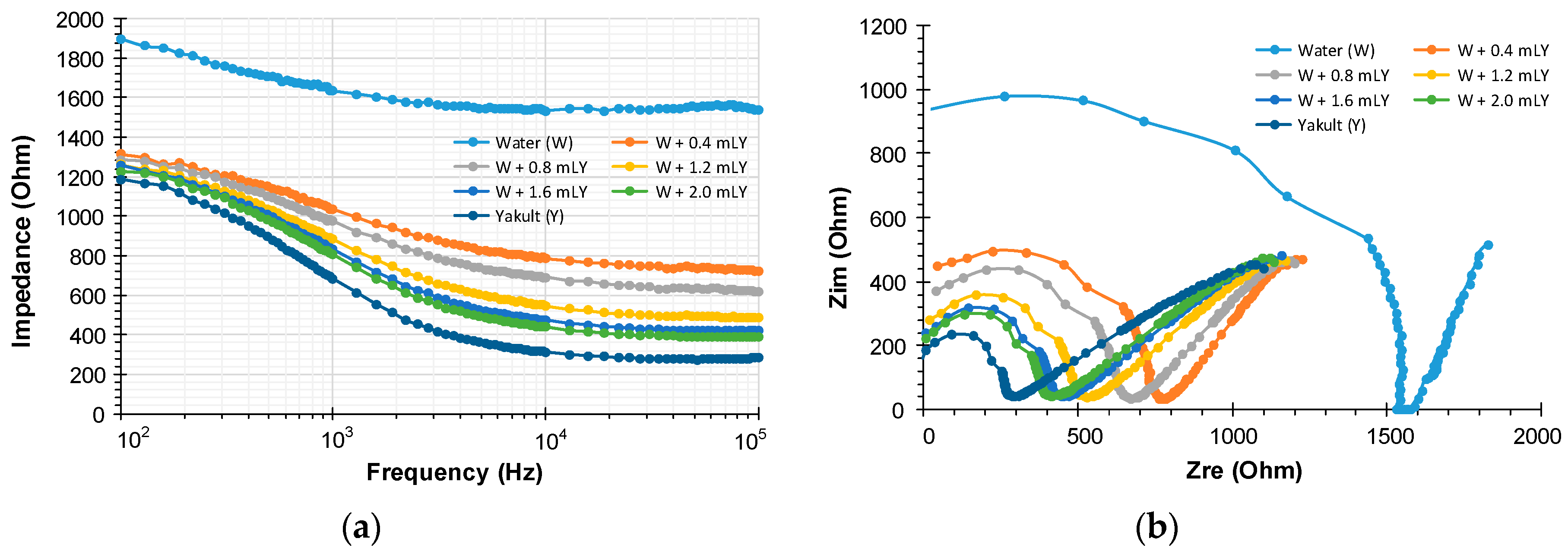
| Prec. RLC Meter | Dev. BIS | Error (%) | |||
|---|---|---|---|---|---|
| R (kΩ) | C (nF) | R (kΩ) | C (nF) | C (%) | R (%) |
| 5.45 | 0.93 | 5.472 | 0.938 | 0.40 | 0.86 |
| 5.45 | 9.41 | 5.489 | 9.341 | 0.72 | 0.73 |
| 5.45 | 34.15 | 5.377 | 34.653 | 0.64 | 1.47 |
| 5.45 | 51.46 | 5.415 | 52.602 | 1.34 | 1.17 |
| Average Error (%) | 0.78 | 1.06 | |||
© 2020 by the authors. Licensee MDPI, Basel, Switzerland. This article is an open access article distributed under the terms and conditions of the Creative Commons Attribution (CC BY) license (http://creativecommons.org/licenses/by/4.0/).
Share and Cite
Santoso, D.R.; Pitaloka, B.; Widodo, C.S.; Juswono, U.P. Low-Cost, Compact, and Rapid Bio-Impedance Spectrometer with Real-Time Bode and Nyquist Plots. Appl. Sci. 2020, 10, 878. https://doi.org/10.3390/app10030878
Santoso DR, Pitaloka B, Widodo CS, Juswono UP. Low-Cost, Compact, and Rapid Bio-Impedance Spectrometer with Real-Time Bode and Nyquist Plots. Applied Sciences. 2020; 10(3):878. https://doi.org/10.3390/app10030878
Chicago/Turabian StyleSantoso, Didik R., Bella Pitaloka, Chomsin S. Widodo, and Unggul P. Juswono. 2020. "Low-Cost, Compact, and Rapid Bio-Impedance Spectrometer with Real-Time Bode and Nyquist Plots" Applied Sciences 10, no. 3: 878. https://doi.org/10.3390/app10030878
APA StyleSantoso, D. R., Pitaloka, B., Widodo, C. S., & Juswono, U. P. (2020). Low-Cost, Compact, and Rapid Bio-Impedance Spectrometer with Real-Time Bode and Nyquist Plots. Applied Sciences, 10(3), 878. https://doi.org/10.3390/app10030878





